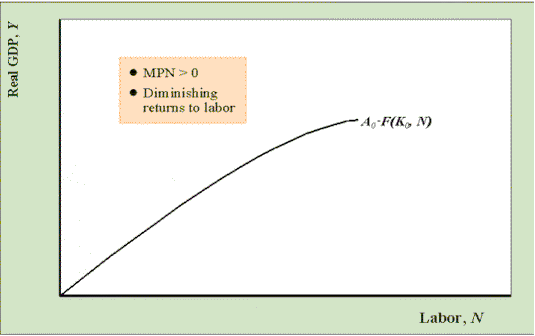Reading: Abel and Bernanke chapter 3, section 1. |
Introduction to Long-run Supply |
|
| The Production Function Assumptions Example Moving Along vs. Shifting Curves
The graph to the right shows the production
function as a function of N holding A and K fixed. |
The Production FunctionThe aggregate production function for the economy is assumed to take the form Y = A·F(K, N)where
Assumptions concerning the shape of F(K, N)
Example: Cobb-Douglas constant returns to scale production functionY = A·KaN1-a , 0 < a < 1 where
Note: Constant returns to scale means that if we double all inputs to the productio function then output exactly doubles. To see that the Cobb-Douglas exhibits this property, note that A·(2K)a(2N)1-a = A·2a21-aKaN1-a = 2A·KaN1-a = 2Y For US data, from the national income and product accounts, we know that labor's share of income is about 0.7 which implies that for the US a = 0.7 and 1 - a = 0.3. Moving Along vs. Shifting Curves
A Short-run Assumption
|
